You’ve probably seen cremini mushrooms at the grocery store before. Maybe you haven’t tried them though, and wonder how they compare to other types of mushrooms.
What are cremini mushrooms? Cremini mushrooms are a variety of the species agaricus bisporus. This type of mushroom includes button mushrooms and portobello mushrooms as well. The only difference is how long the mushrooms have been allowed to age.
In this article I’ll explain what cremini mushrooms are, how to identify them, how to grow them, and more.
What Are Cremini Mushrooms?
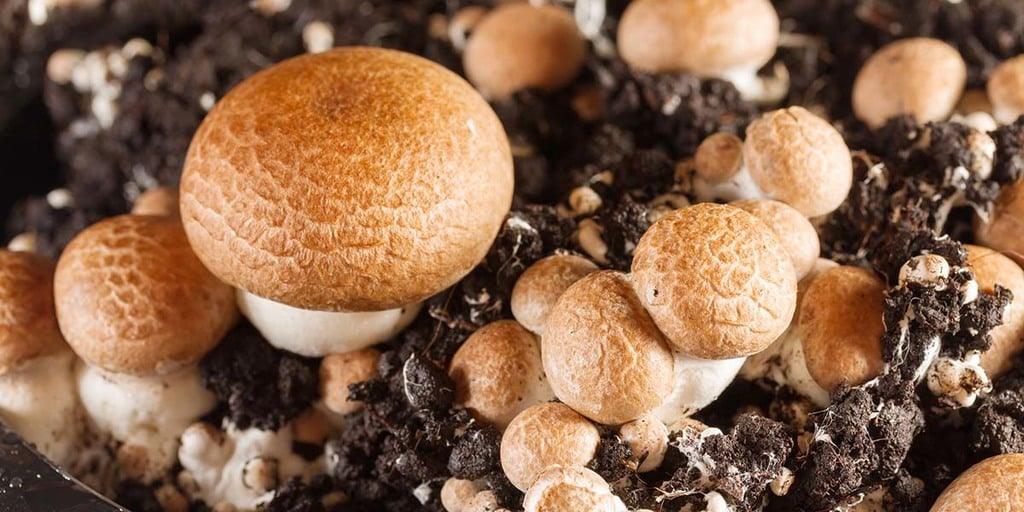
Most people don’t know that several of the most common mushrooms that we can find at the grocery store and eat actually all come from the same variety.
It’s called Agaricus bisporus and it includes cremini mushrooms, as well as portobello and button mushrooms.
The only real difference between these different mushroom varieties is how long they’ve been allowed to mature for.
White button mushrooms are the youngest variety. In the wild these mushrooms usually appear more brown in color even at their baby stage, but they’ve been specifically cultivated for a soft texture and white color.
Cremini mushrooms, which we’ll mostly be talking about today, are in between a button mushroom and portobello mushroom. They’re just allowed to ripen a little bit longer than button mushrooms.
So they have a similar taste and texture, but a little bit stronger. Sometimes they’re also referred to as baby portobello mushrooms.
Portobello mushrooms are allowed to age past the button and cremini stages until they’re fully mature. They grow much larger in size and open up their large, dense cap which is covered with gills underneath.
Of the three types, cremini are personally my favorite, which is why I’ll be talking about them in this article. I find they’re great sauteed or in soups or stews.
They hold up better than button mushrooms in liquid and I just feel that they’ve got an overall nicer color, texture, and better flavor.
How To Identify Cremini Mushrooms
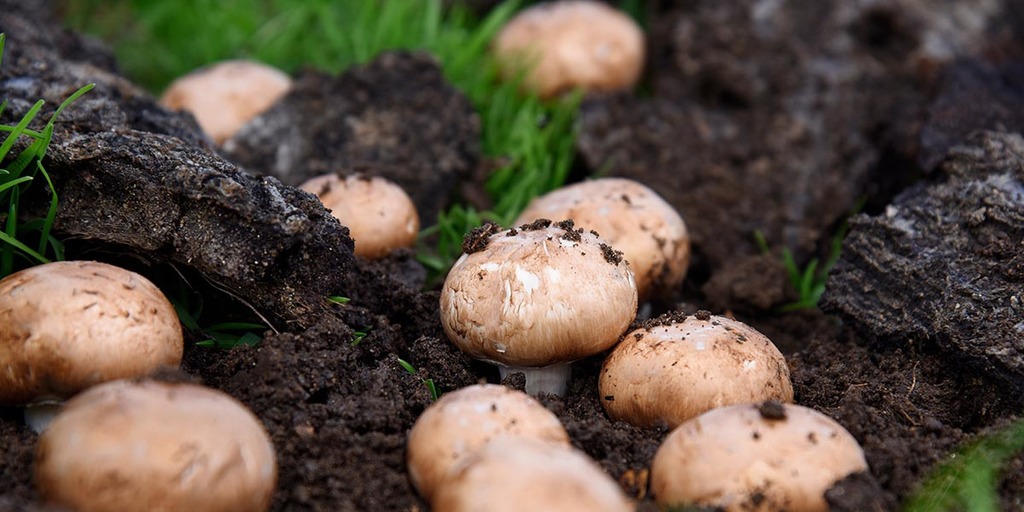
Cremini mushrooms have a dark brown or chestnut coloration to their caps and a whiteish stem. The cap looks more shaggy and textured than that of a button mushroom, but is still quite smooth and rounded.
On fresh criminis, their gills should be completely sheathed, so flip them over and check to see if the gills are covered or not.
When cut into a cross-section, cremini mushrooms should be completely white inside, with the beginnings of developing gills visible.
Can You Forage For Cremini Mushrooms?
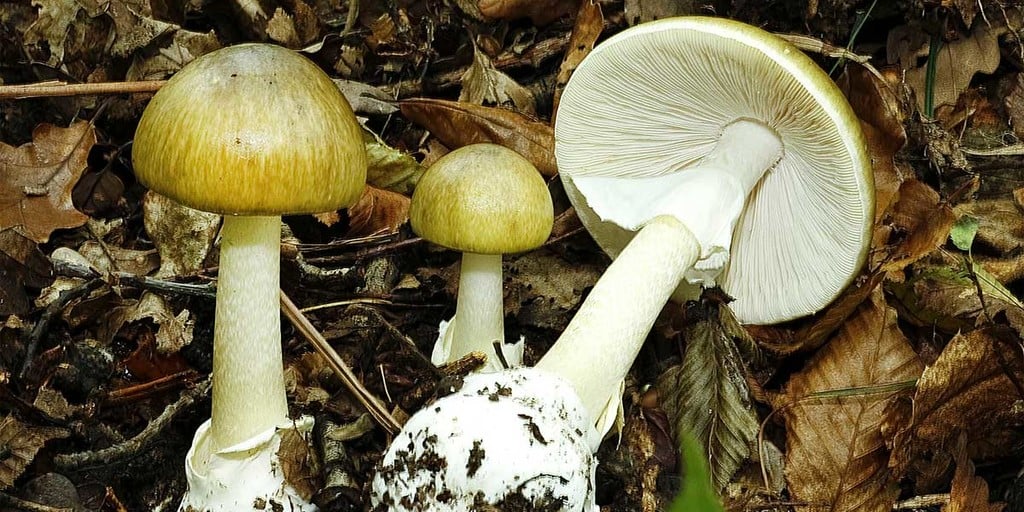
Although Agaricus bisporus mushrooms and their relatives like agaricus camestris (field mushroom) grow in the wild, I would discourage people from trying to forage for them.
To the untrained eye, agaricus mushrooms can look very similar to amanita mushrooms, which include some of the most poisonous and deadly wild mushrooms that grow in both North America and Europe.
Young amanita specimens are particularly dangerous, since they often look very similar to button mushrooms, puffballs, or other edible species.
Many times the symptoms of amanita poisoning don’t appear until 5 to 24 hours after consumption.
At that point, the toxins may have already done irreversible damage to a person’s kidneys and liver. As little as half of a poisonous mushroom cap can be fatal.
Unless you are a trained expert, I’d highly discourage you from trying to forage any type of white field mushrooms, and stick to edible species that are easier to distinguish from poisonous varieties.
Since agaricus mushrooms of all forms are found at low prices in nearly every grocery store and supermarket, there’s just no reason to take the risk.
How To Grow Cremini Mushrooms
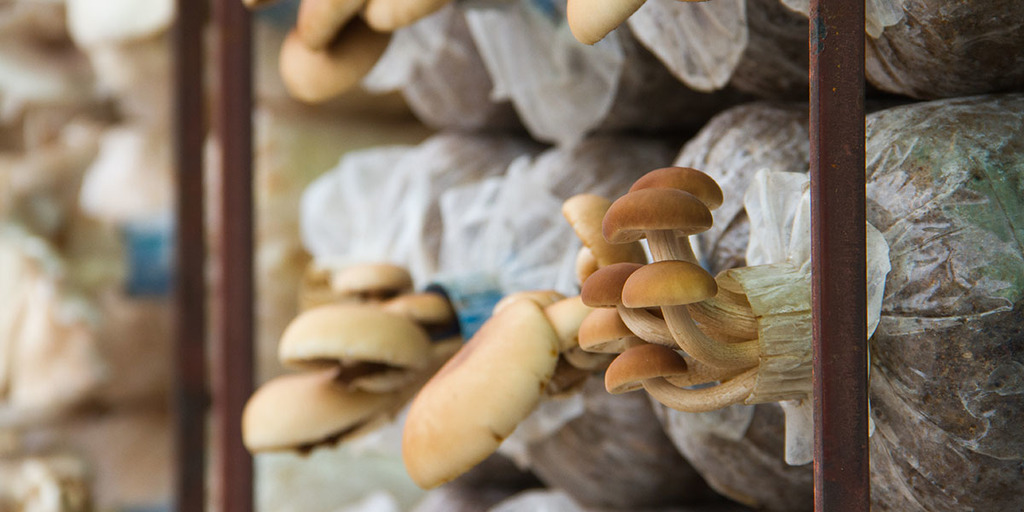
I feel that growing cremini mushrooms is a little bit more difficult than some other varieties like oyster mushrooms.
But it’s definitely still easy enough that any beginner who wants to give it a try should be able to find success.
1. Get A Growing Medium
Mushrooms don’t have chlorophyll like plants, so they get all of their nutrients out of the medium they’re growing in. This means a nutrient-rich growing medium is necessary.
But on the bright side, you don’t need to worry about sunlight or artificial light with mushrooms like you would with plants or microgreens.
The recommended growing medium for cremini mushrooms is compost made with dried poultry waste, straw, gypsum, water, and canola meal.
The compost is then pasteurized to kill off any bacteria or other types of fungal spores that may already be present in the medium.
2. Adding Spawn
Cremini spawn is a concentrated culture of mycelium that has been colonized over the period of several weeks. The spawn gets mixed evenly into the compost.
For the next few weeks, the compost and spawn need to be kept at proper humidity, temperature, and CO2 levels to allow the mycelium to fully develop throughout the compost.
Once the compost looks fully colonized with mycelium, a damp layer of peat moss is added over the top to help provide extra water for the developing mushrooms.
- Read my guide of how to make your own DIY mushrooms spawn here.
3. Cremini Mushroom Formation
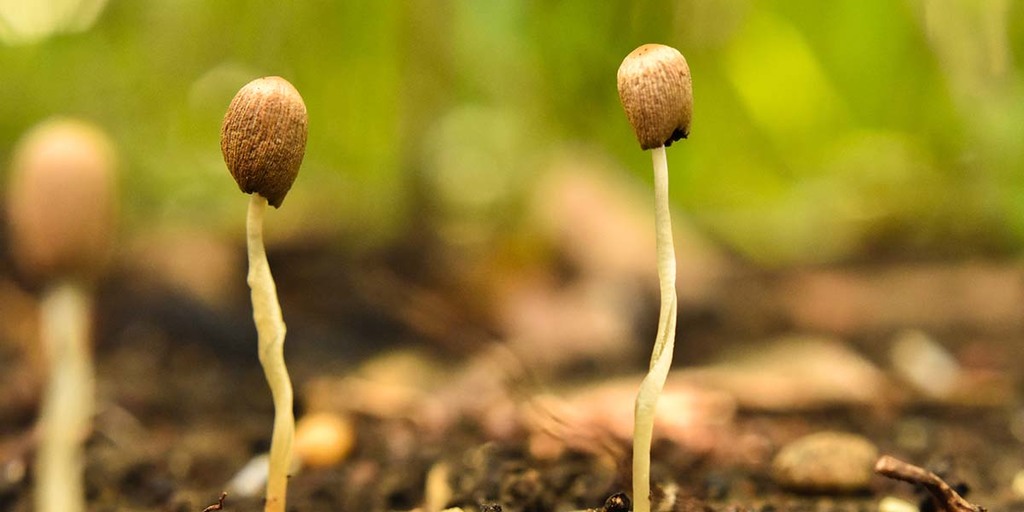
After several more weeks, the mushrooms will begin to form. On commercial farms, mushrooms are induced in order to shorten grow time and produce a high yield.
This practice, called pinning, involves adjusting temperature, oxygen, CO2, and humidity levels in the grow room to trigger the mycelium into starting to produce fruit bodies.
It takes about 8 days before tiny mushroom pinheads will begin to be visible on the soil. Once the mushrooms have pinned, they grow very fast.
They will nearly double in size every 24 hours. They should reach the cremini stage and be mature enough to pick after 4 more days.
4. Picking Cremini Mushrooms
Picking mushrooms is still done by hand. In large operations, picking and packing might take place every day of the year. To cleanly harvest mature cremini mushrooms, they should be cut at the stem with a sharp knife.
Avoid just pulling up your mushrooms, as you risk damaging the mycelium as well as surrounding mushrooms that are still developing.
Mushrooms can be placed directly into shipping boxes to cut down on the amount of handling.
As each additional person or machine that touches the mushrooms risks further bruising or damaging them. If you’re growing mushrooms at home, I recommend waiting until just before you need to use them to harvest.
5. Cremini Mushroom Kits
If the idea of inoculating your own growing medium and dealing with the risk of contamination seems like too much to deal with, you can buy pre-inoculated mushroom kits that are ready to go.
This is a great choice if you’re a hobbyist just looking to try growing mushrooms for the first time.
GroCycle Kits allow you to skip right up to the mushroom formation step.
Often all you need to do is cut a small hole in the bag and gently mist the growing medium with water each day, and you should start to see mushrooms begin to develop after a week or so.
To help the mushrooms grow, you can try to put the soil on a heating pad and try to raise the soil temperature to around 21 C (70 F), especially if you’re growing in the colder months.
What Do Cremini Mushrooms Taste Like? How Should You Cook Them?

If you’ve ever had a mushroom in your life, chances are it was a variety of agaricus bisporus. So you should already have a good idea of what a cremini mushroom tastes like.
If you’ve only ever had button mushrooms before, imagine that, but with a bit more of an earthy taste. So if you want a slightly bolder taste, pick creminis over button mushrooms.
The texture is still delicate and very similar to that of button mushrooms. They are one of the more mild mushrooms and make a great addition to any dish, or eaten on their own and babies will also enjoy their flavor.
Since cremini mushrooms have a low moisture content, they brown quite nicely when sauteed in butter. If you’re going to put them in a soup, I recommend sauteing them first, rather than just throwing them in raw.
The stems of creminis are also perfectly edible. You can dice and sautee them separately in dishes where appearance is less of a priority. For example, they make an awesome addition to omelets.
Be sure to thoroughly wash any type of mushrooms before eating them.
Although they may have been pre-washed before packaging, they still often come with a fair amount of dirt on them that needs to be washed off prior to cooking.
Cremini mushrooms are very low in saturated fat and cholesterol, but they’re a great source of protein and folate.
They also contain a good amount of riboflavin, niacin, thiamin, potassium, copper, zinc, manganese, and selenium.
There is still some scientific debate as to whether cremini mushrooms are a source of vitamin B12 or not. But either way, they are a very healthy ingredient to incorporate into your diet, either on their own or in a recipe.
- Read my guide of How to cook mushrooms the right way as well as how to shop for mushrooms, how to store them, and how to clean and prepare them for cooking.
How To Store Cremini Mushrooms

- Whether you’re buying cremini mushrooms from the grocery store or growing them yourself, they should be refrigerated immediately after harvest or purchase.
- You can store them in their original packaging and they will last until the best before date listed on the package. Or you can repackage them into a paper bag to allow for better airflow. The paper bag will help absorb some of the excess moisture, and prevent them from getting moldy or soggy.
- As a general rule, cremini mushrooms will keep in the refrigerator for about a week.
- If you need to keep your cremini mushrooms for more than a week, you can freeze them. Although freezing fresh mushrooms isn’t recommended and will alter their texture. Instead, sautee your cremini mushrooms first and allow them to cool. Then you can put them in an airtight container and place them in the freezer.
More Cremini Storage Tips
- Don’t stack other foods on top of your mushrooms. They won’t keep for as long once they’re bruised or squished, and they don’t look very appetizing to eat either.
- Don’t place mushrooms next to foods with strong flavors or odors like fish, because they are very porous and will absorb them.
- Try to buy mushrooms close to when you’ll need to use them to avoid waste.
- Don’t store your mushrooms in a crisper drawer with vegetables. The moisture level is too high for them.
If you don’t have a lot of freezer space but want to preserve cremini mushrooms, you can use a low-temperature oven or food dehydrator to dry them out.
Once dry, you can keep them in an airtight container until you want to use them. Properly rehydrated, they’re just as tasty as a fresh mushroom, especially in soups.
Can You Eat Cremini Mushrooms Raw?

It’s not uncommon to see raw button mushrooms and cremini mushrooms put on veggie snack trays alongside carrots, celery, peppers, and other vegetables.
So at first glance, it seems like mushrooms are safe to eat raw, because everybody else is doing it.
But I would caution you against eating raw agaricus mushrooms. They contain a chemical called agaratine, which is a hydrazine-derivative mycotoxin and an IARC Group 3 carcinogen.
Hydrazine is a highly unstable and toxic chemical which is most commonly used as rocket fuel.
There is some research to show that this chemical increases the amount of tumors and cancer in the body, particularly in the stomach, kidneys, and bladder.
See these studies to learn more: https://cancerres.aacrjournals.org/content/46/8/4007.short
https://cancerres.aacrjournals.org/content/38/1/177.short
The good news is that this chemical is heat sensitive, and cooking your cremini mushrooms should completely remove the toxins.
So enjoy cremini mushrooms in your pastas, on your pizza, or anywhere else as much as you want, as long as they’re cooked. Just don’t eat them raw with dip or sliced onto a salad.
Frequently Asked Questions
Q: What’s the difference between cremini and baby bella mushrooms?
A: Cremini mushrooms are sometimes marketed as baby bella or baby portobello mushrooms instead. These different names are all referring to the same thing, the middle life stage of an agaricus bisporus mushroom.
You can use cremini for any recipes calling for baby portobello mushrooms, or even substitute white button mushrooms if you can’t find cremini.
Q: What are the health benefits of eating cremini mushrooms?
A: Cremini mushrooms are very low in saturated fat, cholesterol, and sodium. They’re high in protein, folate, vitamin B6, potassium, zinc, selenium, and a number of other vitamins and minerals.
Q: Is it true you can grow cremini mushrooms from store-bought stems?
A: Yes, it’s possible to grow mushrooms from fresh store bought stems. Use about 1/4 inch (0.6 cm) segments of stem and layer them in a cardboard or plastic box, along with a growing medium and some straw or other moist material until the container is full.
Although using store bought mushrooms has a much higher chance of becoming contaminated with mold, and you’re better off using a pre-inoculated culture.
Conclusion
Cremini mushrooms offer a nice compromise between the mild taste and soft texture of button mushrooms, and the more firm and almost chewy texture of portobello mushrooms.
If you’ve never tried them before, I’d highly recommend trying them out the next time that you are making a recipe that calls for regular button mushrooms.
I wouldn’t recommend foraging for cremini mushrooms, since they are too easily mistakable for some other very poisonous varieties.
But luckily they are widely available at grocery stores all around the world, so you can easily get some for a convenient price.
If you want to learn more about growing mushrooms, then read these guides:
